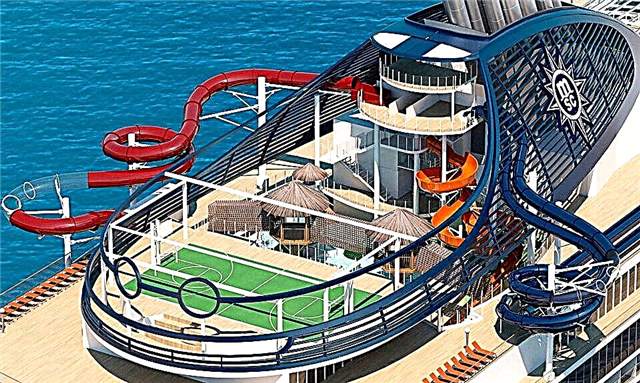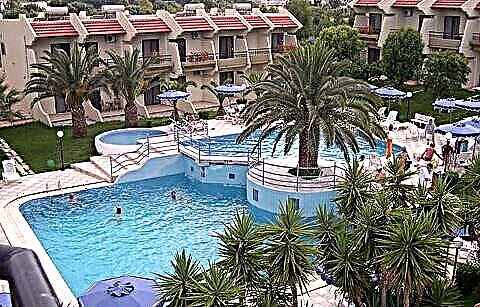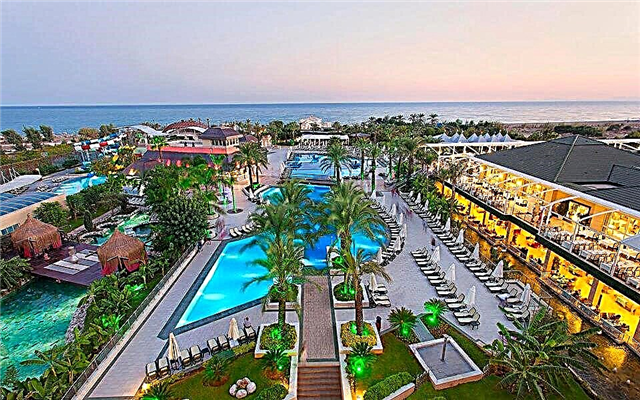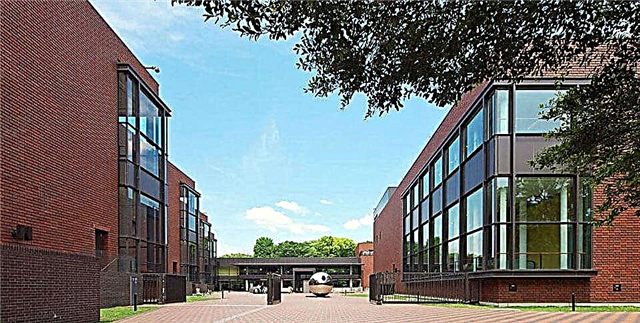Tokyo's museums are a bizarre mix of ancient traditions and modern science and technology. But it is precisely this unexpected mixture that allows us to more fully experience the oriental flavor, to understand the soul of our most eastern neighbor. The expositions are selected in such a way that it is impossible to simply walk through the halls: you will want to study the artifacts in detail and delve into their very essence.
Edo-Tokyo Museum

This is a relatively new exposition: it was opened in 1993. It is noteworthy that there is no specific topic presented in the center. Having come here, tourists get acquainted with the past, present and future of Japan in all forms.
Visitors will see:
- the process of cultivating the land by the first inhabitants of the islands
- changes in the architecture of cities
- the latest modifications of devices that improve the quality of life of people with disabilities
- medieval ball
- consequences of the use of chemical and nuclear weapons
Some of the exhibits have a scale of 1: 1, for example, the Edo Bridge. At the same time, tourists are invited to get acquainted with the customs of the Japanese. The exposition is housed in an interesting futuristic-style building. It covers an area of over 30 square meters. You can visit the exhibition from Monday to Friday from half past nine in the morning to half past six in the evening. On Saturday, the center closes at half past seven in the evening. On Sunday, guests are greeted according to the weekday schedule.
Museum of digital art

It is no coincidence that this center was opened on the island of Odaiba: it is planned to create a special city of the future here. And the appearance of the exposition, where tourists are immersed in virtual reality, comes in handy. A technician helps to organize the process: 470 projectors and 520 computers. They serve 50 digital works. The staff consists of more than 500 people: artists, animators, programmers.
The aim of the exhibition is to convey the picture to the visitor through his own feelings. And the centre's employees succeeded:
- guests are accompanied by exhibits, some react differently to touch
- visitors drink tea from virtual cups (while the containers are filled with exquisite flowers)
- tourists walk on foreign planets, sink to the bottom of the ocean
- guests train strength and endurance by climbing rocks or jumping on a trampoline
All pictures are interconnected, one follows the other. The center is completely new: it began to receive guests in June 2018, but has already become a popular entertainment for Tokyo residents and tourists. Tickets must be booked in advance. And you can view the exposition from 10 am to 9 pm.
Tokyo National Museum

This museum received its first guests in 1872. And today the exposition of the center consists of 120 thousand storage units, which are presented on 100 thousand square meters. The whole complex consists of 5 buildings:
- The main
- Eastern
- Ceremonial
- Horyu-ji temple treasures
- Heisei
During the week, you can study the expositions every day, but not see all the artifacts. The employees do not limit themselves only to the demonstration of the available antiquities: they regularly organize thematic exhibitions. Installations on the theme of Ancient Egypt and modern anime are popular.
European tourists spend a lot of time exploring the Honkan Gallery. Here are samurai swords, scrolls of ancient books, sculptures. And as a souvenir, you can buy a souvenir in one of the shops located on the territory of the center. The complex is open from half past nine in the morning to 5 pm from October to December, from half past nine in the morning to 6 pm - from April to September. On Friday, the center is open until 8pm.
Madame Tussauds museum

It is a branch of the London Center, founded in 1835. The difference between Tokyo is an unusual combination of exhibits. All famous people of different eras are traditionally represented here:
- lady diana
- Madonna (there are two of them, of different ages)
- President Obama
- Lady Gaga
- Marilyn Monroe
- English royal family
But at the same time, visitors see Einstein next to Jobs, Terminator and Spider-Man. A separate room is allocated for the figures of famous athletes. Here, on the rink, the Japanese Mao Asada is depicted, and nearby on the court is the Russian tennis player Sharapova with a racket in her hands. You can take pictures with the exhibits, you are allowed to come closer to them. In special halls, visitors are invited to reincarnate as vocalists and perform a hit with their favorite singers on stage.
And those who wish can visit the workshop where the figures are made. The whole process is presented here: from casting and painting to dressing and installing on pedestals. True, this process can cause negative emotions: the eyes and other elements look too similar, which will then become parts of the exhibits. You can visit from 9 am to 7 pm.
National Museum of Contemporary Art

The complex has been receiving visitors since 1952. The first building in which it was located was designed by the architect Kunio Maekawa, a student of Le Corbusier. Subsequently, the government acquired 2 more buildings for the center, located in the neighborhood. The collection is based on the collection of treasures of Matsukata Kojiro, who has been looking for artifacts all over the world all his life. He donated 1925 storage units to the center.
The modern complex consists of:
- Exhibition halls. They feature a unique collection of Japanese umike-e prints. The number of storage units is more than 8000. The paintings of Japanese painters are distributed by periods, starting with Meiji. But here you can also see the canvases of world celebrities: Chagall, Gauguin, Kandinsky, Picasso, Modigliani.
- Own art library. It has a reading room where you can get acquainted with unique publications in Japanese and European languages.
- National Film Center. The fund consists of 40,000 storage units. These are feature films, documentaries and photographs.
- Crafts galleries. Here ceramics, fabrics and metal products are presented not only by Japanese craftsmen, but also by artisans from other countries and continents. The branch has been operating since 1977.
MOMAT (this is the abbreviation of the name of the center) receives visitors from 10 am to 5 pm.
National Museum of Nature and Science

The exposition began to receive guests in 1871. Today it is one of the most visited city centers. All exhibitions are dedicated to the development of natural sciences. The complex is divided into 2 galleries:
- Worldwide. Here, the exhibits tell about the development of world science and technology and the impact of changes on the environment. A rooftop garden has been created with the main medicinal plants used by people. There are more than 160 types of them in total.
- Japanese. The exhibits explain everything about the country's problems. There is a 3D cinema in this part of the complex. Here guests are shown popular science and documentaries. An effigy of the devotee Hachiko is installed in the hall.
Terminals are installed throughout the center, with the help of which tourists can expand the knowledge gained while visiting the exhibition. An audio guide is available for a fee. Languages used: Japanese, English, Korean, Chinese. The center expects visitors from Tuesday to Sunday from 9 am to 5 pm, on Friday - from 9 am to 8 pm. On Monday, the complex is closed for viewing the exposition.
City Art Museum

The center began operating in March 1995. All exhibitions, both permanent and thematic, are funded by the municipality of the city. Today, you can see paintings, photographs, calligraphy and sculptures of not only Japanese but also foreign artists and sculptors. The center occupies over 1.5 thousand square meters. Permanent exhibitions are located on the ground floor. Above, thematic exhibitions are held in various directions.
The complex hosts seminars and lectures on art.Separate rooms are intended for performances on an artistic theme. Here you can watch the dancers, listen to the performance of the vocalists. The center does everything to make the visit memorable for a long time. The exposition is open all days of the week from half past ten in the morning to half past six in the evening. On Friday, the center accepts guests until 8 pm.
Shitamachi Museum

The exposition presents a life-size part of the Lower City. In ancient times, when the city of Edo was actively built up, poor artisans settled in the lower part. The buildings were one-story, due to the limited space they were closely pressed to each other. Such a city was subject to destruction: fires and earthquakes. The earthquake of 1923 almost completely destroyed the buildings, and the Second World War marked the beginning of the multi-storey buildings of the Lower City. Now you can see the life of the poor Tokyo residents of the 19th and 20th centuries only in the center of Sitamachi.
The complex received its first visitors in 1980. They were looking for artifacts for the exhibition all over Japan. But now tourists can see a part of Tokyo's history: a butcher's shop, potter's and coppersmith's workshops, a smithy, and merchants' varnishes. It is noteworthy that the center lives on: in the winter and summer seasons, visitors see the different Lower Town.
The complex is open from Tuesday to Sunday from half past nine in the morning until half past four in the evening. Monday is a day off.
National Arts Center

The center is one of Kise Kurokawa's large-scale projects. The author decided to design a building where any exhibitions can be held. He believed that architecture, like any form of art, should not be understood until the very end. The visitor will have to think about what he saw, reflect and draw conclusions, after a while. The building is called a glass wave. It is located in the trendy Roppongi quarter, close to boutiques, high-end restaurants and foreign firms.
And it's easy to see the center: its height is 21 meters. Inside, the space leaves the impression of a constantly changing volume. This is due to the moving elevators running through it from top to bottom. There is no permanent exhibition in the center, but there are regular exhibitions on any topic related to art. The 3rd floor provides guests with the services of the library, where you can familiarize yourself with materials on artistic themes free of charge. Lectures are also held here.
The building has a developed infrastructure: a souvenir shop, a play area for kids, a cafe. The center is open to visitors on all days, except Tuesday, from 10 am to 6 pm, on the days of themed exhibitions - until 8 pm. On Friday, the complex is open until 8 pm.
Metro museum

This exposition was opened in 1986. It can be conditionally divided into sections:
- History of the Tokyo subway. Here are the first subway cars, the Ueno station was reconstructed in 1927 (the year the first line was launched).
- Subway construction. This section shows the technologies and equipment used for tunneling.
- Subway passenger service. The stands feature exhibits that sell entrance tokens, models of escalators, ventilation of tunnels and stations.
- Safety. Tourists are encouraged to familiarize themselves with the systems for preventing terrorist acts and emergency situations.
- The device of subway trains. The exposition tells about modern and old locomotives and carriages.
- The role of the subway in Japan and in the world.
- A zone for small visitors. Here guests are invited to get acquainted with the Tokyo subway in a playful way.
The exposition is open from 10 am to 5 pm.
Toy Museum

A private collection has become the basis of the modern exposition. Its owner, Nakano, handed it over to the city in 1984. And in 2008, his son placed the increased funds in a school building, built before the outbreak of World War II. Today the collection comprises more than 10,000 items. The most valuable exhibits occupy a little more than 1 room: you can only look at them. And the rest of the toys serve for their intended purpose: they are played.
Guests of all ages will not remain indifferent at the sight of:
- Haunted houses
- Toy forest. The floor in this room is made of cypress planks.
- Plastic lake. Instead of water, it contains plastic beads. You can dive into the lake.
- Ship Apollo
There are also quiet games: table football, cards. The shop at the museum sells packages with sweets, small toys made of wood are put in bags. In the center, the hearts of children and adults are warmed up. The complex is ready to receive guests on all days of the week, except Thursday, from 10 am to 4 pm.
Miraikan Museum

Miraikan is a place where all the advanced achievements of science and technology are concentrated. And at the same time, everything can be touched! Guides answer all questions, tell and show what, how and why works. Guests in a playful way get acquainted with new products in:
- biology
- physics
- robotics
- astronautics
- informatics
It will take several days to inspect, at least briefly, all 6 floors. And the hours that the excursion continues fly by unnoticed. The complex is open daily from 10 am to 5 pm.
Mori Art Museum

Mori Center is located on the 53rd and 54th floors of the skyscraper. This is the tallest (literally) museum in Japan. Inspection of the exposition can be combined with the study of the sights of the Japanese capital. The first director of the center intended not only to place canvases by famous artists, but also to organize thematic expositions, supporting young Japanese painters. But Mr. Mori, the owner of the tower, believes that his complex should become as significant as the Louvre, the Hermitage, and the Uffizi gallery.
The center can be visited daily from 10 am to 10 pm.
Nezu Fine Arts Museum

The complex began operating in 1940 after the death of Nezu Kochiru, who bequeathed his collection of antiquities to the museum. But in 1945, the center was damaged during air raids on Tokyo. After restoration and reconstruction, it only reopened in 2006. This is a corner of Buddhist harmony. Here, ancient sculptures are surrounded by graceful plants. The pavilions of the center offer to see bronze dishes, calligraphy, drawings. The center accepts guests from half past nine in the morning until half past five in the evening.
Sony Explora Science Museum

This exposition is presented by the Sony concern. The purpose of the exhibition is to show the unity of the company's technical developments and applied processes. The concern is currently developing digital technology. Exposition is another additional way to advertise manufactured products.
Exhibition guests are invited to get acquainted with:
- digital film and music production
- technologies of modern computer games
It is interesting for adults and children to visit the hall of optical illusions and the hall of sound. You can even shoot a cartoon with yourself in the lead role. Several times a day, performances with optical and sound effects are shown for guests. The concern has created equipment for a unique planetarium. Through a super-powerful telescope, guests can admire 2 million stars. No other observatory in the world can boast of similar equipment. But filming with a camera or phone in the center is not allowed.
The center is open Monday through Friday from half past nine in the morning until half past five in the evening. Saturday and Sunday - from 9 am to half past seven in the evening.
Panasonic Shiodome Museum

This is a new museum, it started working in 2003. The center presents two expositions simultaneously:
- hall with 230 works by Georges Rouault and canvases by other artists whose work is associated with the activities of the concern
- hall with advertising products of the company
Unfortunately, the comments below the exhibits are exclusively in Japanese. One gets the impression that the center is a copy of the Sony museum. Open daily from 10 am to 6 pm.
Origami museum

Visiting exhibitions in Tokyo is an expensive pleasure. But the origami museum accepts guests for free.True, you will have to pay for master classes. But this is strictly at the request of the tourist.
The origami center is spread over several floors:
- The exposition itself is located on the 1st and 2nd floors. Here guests can see unusual figurines made of paper of different colors. These are special works of art!
- The 4th floor is given over to the offices of the origami center.
- The 5th and 6th floors have rooms where origami masters teach visitors the art of creating figurines.
There is also a small shop at the center where you can buy origami literature, a ready-made figurine, as well as everything you need for this exciting activity. A tiny paper mill is located in the basement. Spectacles are offered free of charge for visually impaired guests. It is very nice. Tokyo Center is a family business founded in 1858. Its current director, Kazuo Kobayashi, claims that origami is a useful thing: you can always make figures from everything and immediately use them for their intended purpose. For example, make a stand for chopsticks or a napkin holder. I am ready to receive guests on all days of the week, except Sunday, from 10 am to 5 pm.
Museum of Marine Science and Shipbuilding

The building itself, which houses the exhibition, is interesting: it depicts a ship. And inside there is an interesting filling: interactive bridges, steering wheels, devices. And all this can be touched! This excursion is very interesting for children of all ages. The exposition tells about the history of Japanese shipbuilding, guests will get acquainted with the peculiarities of the fishing of the island state, the creation and collapse of the country's colonies.
The famous icebreaker Soya is moored nearby at the eternal stop.
He got up here only in 1979, and before that the ship had a busy life:
- Initially, the icebreaker was called Volochaevets and was built at the shipyards of Japan for the Soviet Union. But diplomatic relations were severed in 1938, the ship remained in Japan and became known as Soya.
- During World War II, he did not participate in hostilities: he only brought food and ammunition, and was practically not injured.
- After the war, Soya was converted into a peaceful ship. In 1950 he took part in the Antarctic expedition.
- In 1958 he rescued polar explorers. The operation was only partially successful: the dogs had to be abandoned on the ice floe. But in the spring, Soya returned and took 2 surviving huskies. This plot became the basis of the film.
- Soya himself was trapped in ice, he was rescued by the Soviet icebreaker Ob.
The interiors of the ship correspond to 1958. Visitors can imagine how the crew of the legendary ship lived. All devices are allowed to be touched: they are in good condition. You can get on the icebreaker free of charge: if you wish, you should make a voluntary donation. Nearby, on the site, you can see a deep-sea bathyscaphe, guns reclaimed from Russian sailors during the Battle of Tsushima, a sailing ship. The complex awaits visitors from 10 am to 5 pm.
Museum of photography

The center was organized in 1990, and moved into the building it occupies today after 5 years: in 1995. There are permanent exhibitions here. But there are not many of them. But the thematic ones are amazingly interesting. Japanese photographers present their chosen subjects from an unexpected angle. There is a high-quality English translation under each photo. The space occupied by the exposition is small, but everything is neatly and compactly located.
The exhibitions are held to support aspiring Japanese and Oriental artists. Skill contests are held for them. The works of the winners in various nominations are then exhibited in a separate room. The complex has a shop with special literature on photography. You can visit the center on Thursday and Friday from 10 am to 8 pm, on other days - from 10 am to 6 pm.
Advertising Museum

The exposition began working in 2002. It presents the entire history of advertising for the country, from the beginning of Edo to the present day. Here you can see the advertising texts that received the prizes. The complex has permanent exhibitions, but 12 thematic ones are held throughout the year. The center has a library where visitors can learn about advertising literature. Open daily from 11 am to 6 pm.











